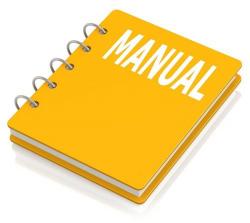Kobelco SK310-III, SK310LC-III Crawler Excavators Workshop Repair & Service Manual
Catalog:
Model:
Complete digital official shop manual contains service, maintenance, and troubleshooting information for the Kobelco SK310-III, SK310LC-III Crawler Excavators. Diagnostic and repair procedures are covered in great detail to repair, maintain, rebuild, refurbish or restore your excavators like a professional mechanic in local service/repair workshop. This cost-effective quality manual is 100% complete and intact as should be without any missing pages. It is the same factory shop manual used by dealers that guaranteed to be fully functional to save your precious time.
This manual for Kobelco SK310-III, SK310LC-III Crawler Excavators is divided into different sections. Each section covers a specific component or system and, in addition to the standard service procedures, includes disassembling, inspecting, and assembling instructions. A table of contents is placed at the beginning of each section. Pages are easily found by category, and each page is expandable for great detail. It is in the cross-platform PDF document format so that it works like a charm on all kinds of devices. You do not need to be skilled with a computer to use the manual.
“SK310-III,SK310LC-III (S5LC0005E).pdf”
Kobelco SK310-III, SK310LC-III Crawler Excavators Shop Manual; 350 pages
“SK310-III,SK310LC-III (S5LC0006E).pdf”
Kobelco SK310-III, SK310LC-III Crawler Excavators Shop Manual; 918 pages
EXCERPT:
2.2.3 TIME DELAY VALVE SECTION (REFER TO FIG. 6)
(1) When the brake release ;
Primary pilot pressure is constantly exerted upon the PG port. When a brake release command is applied to the SH port, spool (531) moves down against the force of spring (541). This causes the pressure at the PG port to get through to the PR port and release the brake.
(2) When the brake operates ;
1) When the brake release command from the SH port stops, the spool moves up by the force of the spring. This shuts off the PG port from the PR port.
2) The oil of the PR port runs to the D port through the orifice in plunger (532). At this moment, the brake has a certain stroke volume (Vs cm3) and suppose the flow of oil passing through the orifice is Q (cm3/sec), the braking action delays by t = V s/Q, the time from the time when the brake piston makes a
I full stroke (released state) till it pushes the disk.
3) The valve is so constructed that the differential pressure before and after the orifice is held to a low constant level (1.2kgf/cm2) in order to make Q small and steady. The function is as shown below.
In order to keep the differential pressure before and after the orifice, an orifice is formed by the edge and the side hole of the plunger (encircled), as shown is Fig. 6. That is to say, as the pressure at PR increases, the plunger is pressed down to close the orifice. If the orifice is closed, the pressures at PR and X are equalized. This pushes up the plunger by the force of the spring. Repetition of this action causes the differential pressure between the PR and X ports so it is kept constant at a specified level.
...





